Abstract
Animals were depleted of complement using cobra venom factor and the influence of complement depletion on the course of renal infection was studied. Complement depletion markedly increased the susceptibility of renal tissue to a challenge with an E. coli strain sensitive to the bactericidal activity of normal serum, but did not influence the outcome of a challenge with a serum-resistant strain of E. coli. These observations are consistent with the hypothesis that complement-mediated host immune mechanisms do play a role in the biology of renal infection and are an important component of the host's immune response in pyelonephritis.
Full text
PDF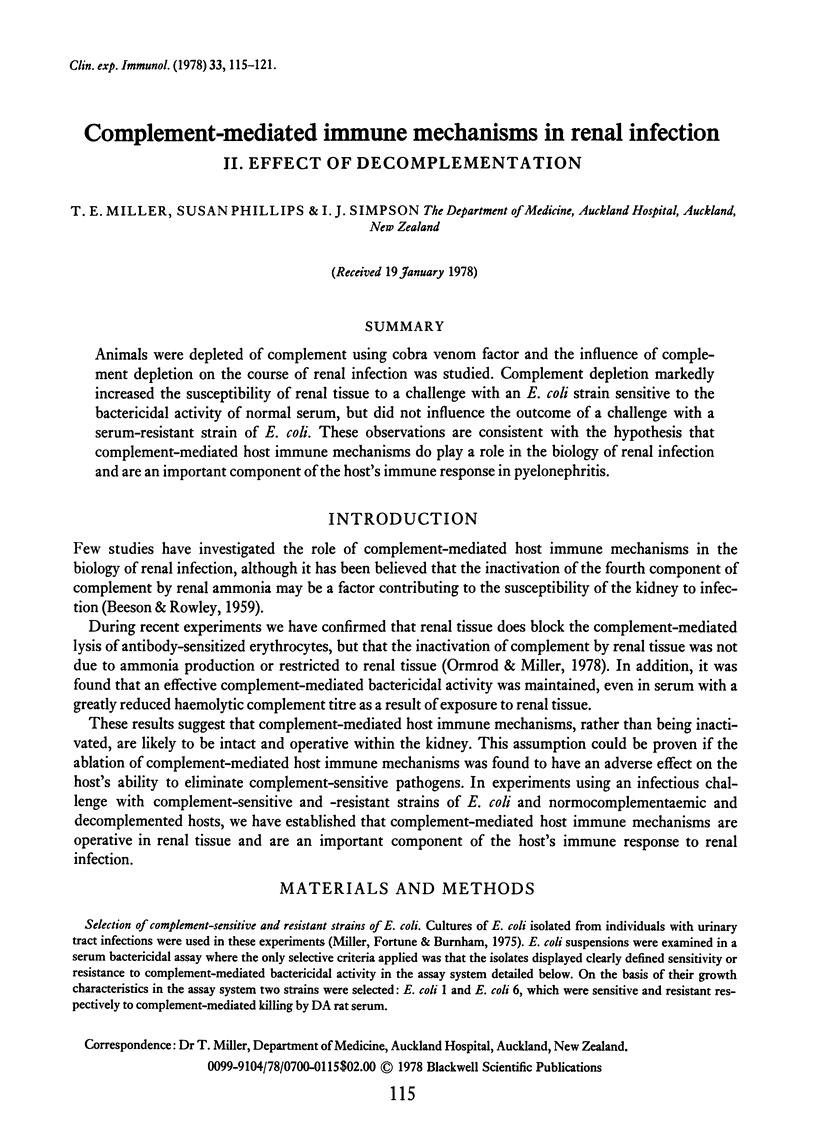
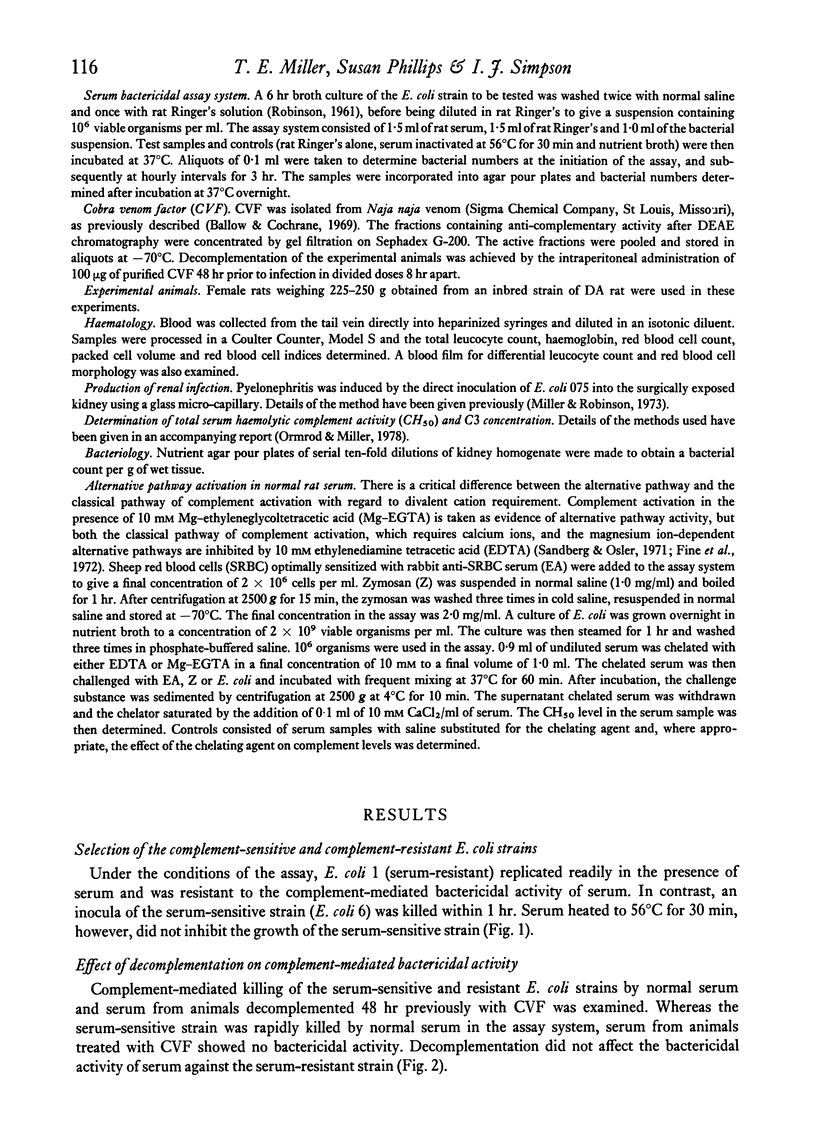
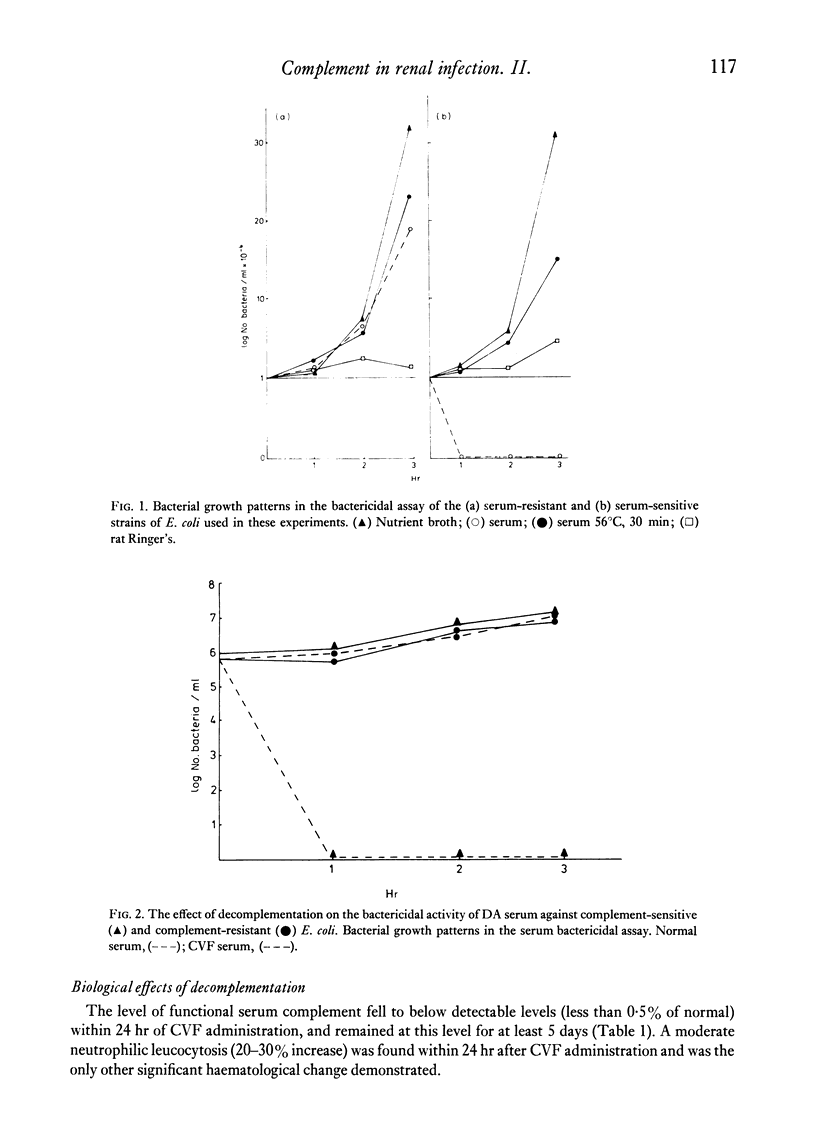
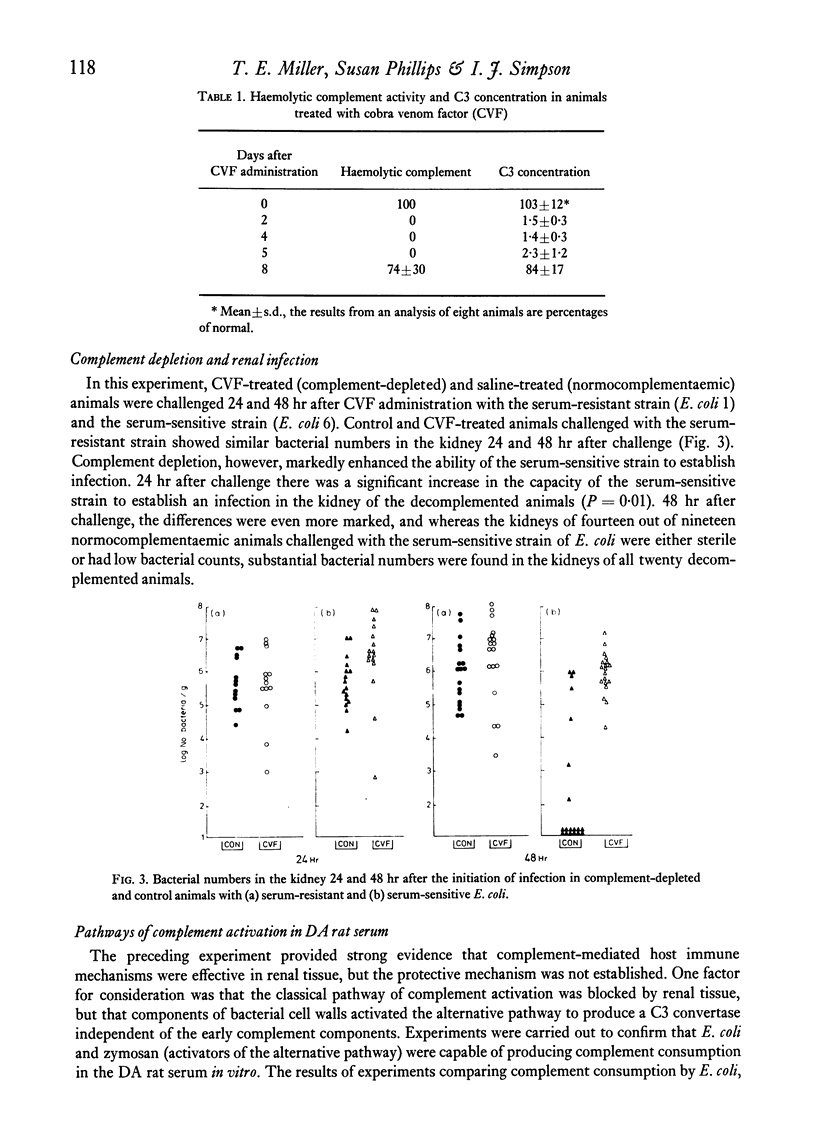
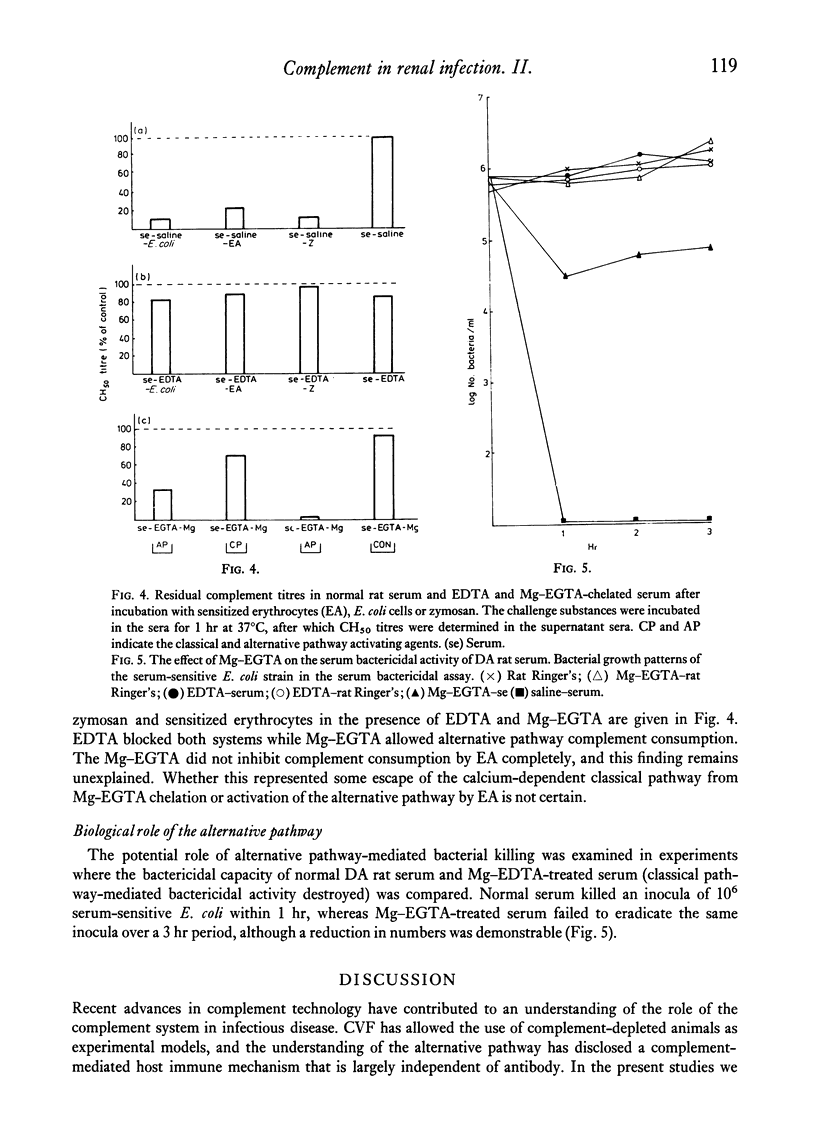
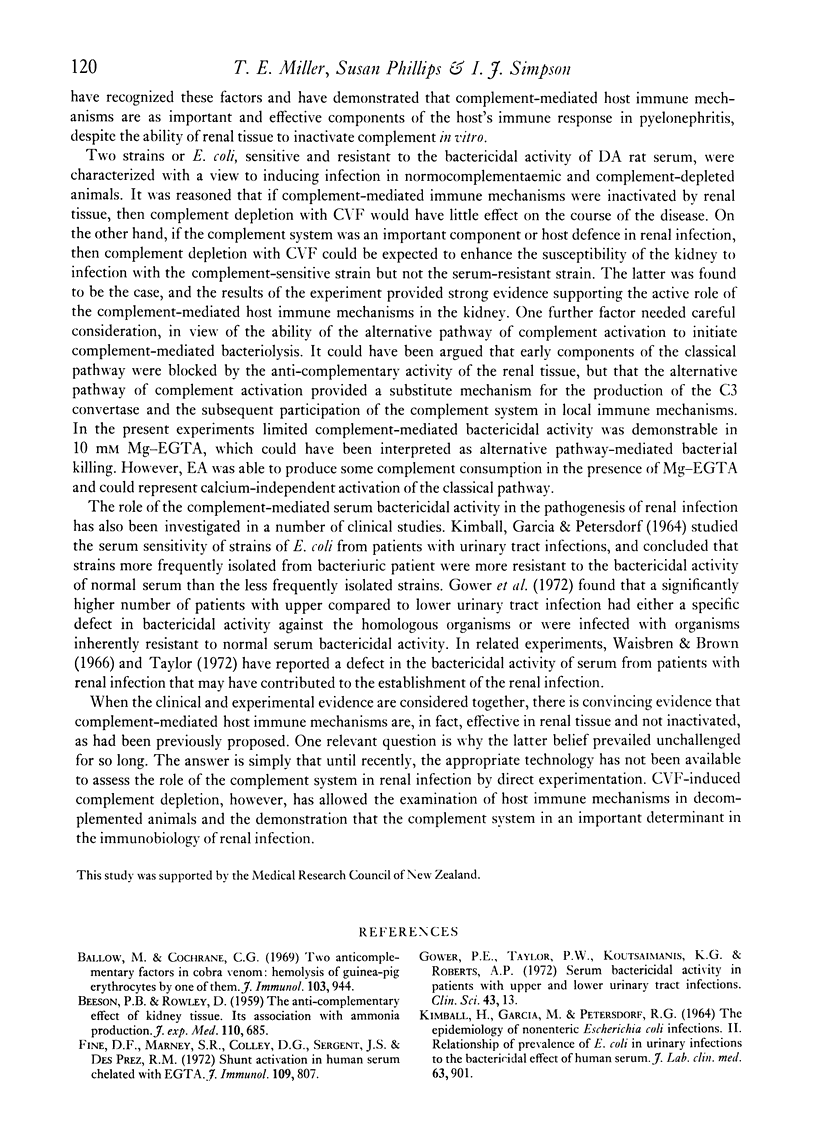
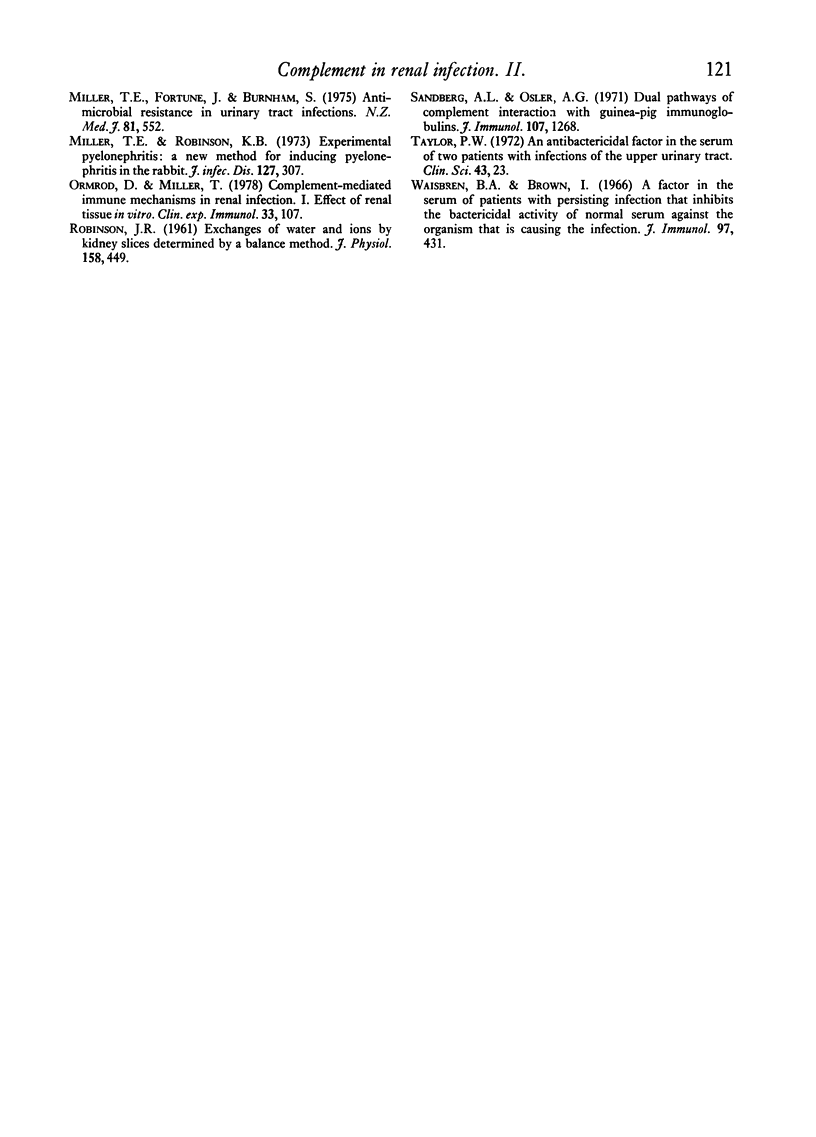
Selected References
These references are in PubMed. This may not be the complete list of references from this article.
- BEESON P. B., ROWLEY D. The anticomplementary effect of kidney tissue; its association with ammonia production. J Exp Med. 1959 Nov 1;110:685–697. doi: 10.1084/jem.110.5.685. [DOI] [PMC free article] [PubMed] [Google Scholar]
- Ballow M., Cochrane C. G. Two anticomplementary factors in cobra venom: hemolysis of guinea pig erythrocytes by one of them. J Immunol. 1969 Nov;103(5):944–952. [PubMed] [Google Scholar]
- Fine D. P., Marney S. R., Jr, Colley D. G., Sergent J. S., Des Prez R. M. C3 shunt activation in human serum chelated with EGTA. J Immunol. 1972 Oct;109(4):807–809. [PubMed] [Google Scholar]
- Gower P. E., Taylor P. W., Koutsaimanis K. G., Roberts A. P. Serum bactericidal activity in patients with upper and lower urinary tract infections. Clin Sci. 1972 Jul;43(1):13–22. doi: 10.1042/cs0430013. [DOI] [PubMed] [Google Scholar]
- KIMBALL H., GARCIA M., PETERSDORF R. G. THE EPIDEMIOLOGY OF NONENTERIC ESCHERICHIA COLI INFECTIONS. II. RELATIONSHIP OF PREVALENCE OF E. COLI IN URINARY INFECTIONS TO THE BACTERICIDAL EFFECT OF HUMAN SERUM. J Lab Clin Med. 1964 Jun;63:901–906. [PubMed] [Google Scholar]
- Miller T. E., Fortune J., Brnham S. Antimicrobial resistance in urinary tract infections. N Z Med J. 1975 Jun 25;81(542):552–557. [PubMed] [Google Scholar]
- Miller T. E., Robinson K. B. Experimental pyelonephritis: a new method for inducing pyelonephritis in the rat. J Infect Dis. 1973 Mar;127(3):307–310. doi: 10.1093/infdis/127.3.307. [DOI] [PubMed] [Google Scholar]
- Ormrod D. J., Miller T. E. Complement-mediated immune mechanisms in renal infection. Clin Exp Immunol. 1978 Jul;33(1):107–114. [PMC free article] [PubMed] [Google Scholar]
- ROBINSON J. R. Exchanges of water and ions by kidney slices determined by a balance method. J Physiol. 1961 Oct;158:449–460. doi: 10.1113/jphysiol.1961.sp006779. [DOI] [PMC free article] [PubMed] [Google Scholar]
- Sandberg A. L., Osler A. G. Dual pathways of complement interaction with guinea pig immunoglobulins. J Immunol. 1971 Nov;107(5):1268–1273. [PubMed] [Google Scholar]
- Taylor P. W. An antibactericidal factor in the serum of two patients with infections of the upper urinary tract. Clin Sci. 1972 Jul;43(1):23–30. doi: 10.1042/cs0430023. [DOI] [PubMed] [Google Scholar]
- Waisbren B. A., Brown I. A factor in the serum of patients with persisting infection that inhibits the bactericidal activity of normal serum against the organism that is causing the infection. J Immunol. 1966 Sep;97(3):431–437. [PubMed] [Google Scholar]


